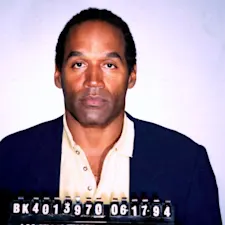
Why Shoplifting Is Skyrocketing in America
Retailers across the United States are grappling with a surge in shoplifting, a problem that industry leaders warn could lead to higher prices and store closures. Here are the key reasons behind the rising tide of retail theft.
1. COVID-19 Lockdowns
During the COVID-19 lockdowns in 2020 and early 2021, retail losses decreased because stores were either closed or had limited hours. However, with the return to normal retail operations, crime rates have surged once more.
2. Organized Retail Crime
Organized crime rings are increasingly targeting stores, coordinating thefts with the intent to resell stolen goods online. These sophisticated operations often recruit individuals, known as "boosters," to steal merchandise, which is then sold on platforms like Amazon® and Facebook® Marketplace.
3. Lenient Penalties
Changes to state laws have raised the threshold for felony shoplifting, making it easier for thieves to avoid severe penalties. For example, California's Proposition 47 reclassified nonviolent thefts as misdemeanors for goods valued under $950, which some argue has emboldened thieves.
4. Inflation and Economic Hardship
Steep inflation has increased the cost of goods, making stolen merchandise more valuable. Economic hardship from the COVID-19 pandemic has also driven more people to shoplift, either out of necessity or to make money by reselling stolen items.
5. Bail Reforms
Reforms to bail policies in various states have made it easier for individuals arrested for shoplifting to avoid jail time before trial. This has potentially reduced the deterrent effect of arrest and incarceration for would-be thieves.
6. Pandemic-Era Policies
Pandemic-era policies, such as mask mandates and bans on single-use plastic bags, have inadvertently facilitated shoplifting. Masks help thieves conceal their identities, while reusable bags make it easier to smuggle out stolen goods.
7. Insufficient Data
National statistics on retail theft are unreliable, with nearly 40% of law enforcement agencies not reporting recent crime data to the FBI. Without clear data, it is challenging to gauge the true scale of the problem and allocate resources effectively.
8. Employee Theft and Process Failures
A significant portion of retail shrinkage, or loss of inventory, is due to employee theft and process failures. This internal loss adds to the overall burden on retailers, who must address both internal and external theft.
9. Perceived Lawlessness
High-profile incidents of brazen thefts, often captured on video and shared widely on social media, contribute to a perception of lawlessness. This perception can increase fear among the public and pressure lawmakers to adopt tougher crime policies, even if overall shoplifting rates are not dramatically higher.
10. Political and Social Factors
Shoplifting has become a politically charged issue, with leaders on both sides of the aisle using it to argue for or against criminal justice reforms. This has led to increased scrutiny and calls for harsher penalties, despite evidence suggesting that severity of punishment is less effective than the certainty of being caught.

As retailers and policymakers grapple with the surge in shoplifting, it is clear that a multifaceted approach, addressing both the root causes and the immediate impacts, is necessary to mitigate this growing problem.
References: Why shoplifting is soaring across the US — and will only get worse | What America's shoplifting panic is really about | What the Panic Over Shoplifting Reveals About American Crime Policy
























